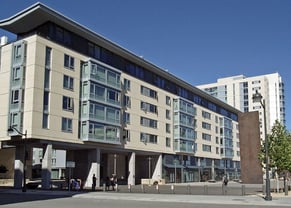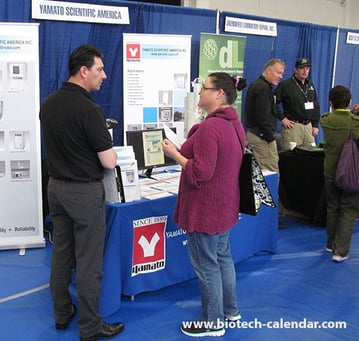 Since HIV/AIDS emerged as a global health problem in the 1980's, researchers have been diligently working to create new treatments and vaccines for the disease. Currently, there is no cure for the disease, and treatments can only suppress it. Because of its severity and broad reach, scientists around the world receive substantial funding each year to study this virus in order to gain a more thorough understanding and better combat it. Now, thanks to an award from the Foundation for AIDS Research (amfAR), researchers at the University of California, San Francisco will be able to study the virus in a new $20 million institute, located on the Mission Bay campus, for the next five years.
Since HIV/AIDS emerged as a global health problem in the 1980's, researchers have been diligently working to create new treatments and vaccines for the disease. Currently, there is no cure for the disease, and treatments can only suppress it. Because of its severity and broad reach, scientists around the world receive substantial funding each year to study this virus in order to gain a more thorough understanding and better combat it. Now, thanks to an award from the Foundation for AIDS Research (amfAR), researchers at the University of California, San Francisco will be able to study the virus in a new $20 million institute, located on the Mission Bay campus, for the next five years. The institute will work to find a cure for the virus by the year 2020 by focusing on four key areas:
- Finding the exact locations of the virus reservoirs.
- Learning about the formation and persistence.
- Quantifying the amount of virus in the reservoirs.
- Removing the virus from the body.
|
RELATED ARTICLES: Texas Medical Center Continuing to Expand with New Medical Campus |
"The San Francisco area has a higher concentration of scientific thought leaders in HIV than anywhere else in the world. The Bay Area has consistently led the way in developing and implementing scientific advances in HIV prevention and treatment, and the potential for this team of researchers to develop a cure is unparalleled," explained Vice President of amfAR, Dr. Rowena Johnston.
In order to produce the best and most thorough results, researchers from UCSF will collaborate with other scientists from the bay area and around the country.
Kevin Robert Frost, Chief Executive Officer of amfAR explained, “We intend to quicken the pace of cure research by supporting a collaborative community of leading HIV researchers in one cohesive enterprise. The institute will allow them to conduct the science, share ideas, and test and evaluate new technologies and potential therapies in a state-of-the-art environment. And I can think of no better base for such an enterprise than the San Francisco Bay Area, the crucible of technological innovation in America."
Researchers from the San Francisco institute will collaborate with life scientists from:
- Gladstone Institute of Virology and Immunology
- Blood Systems Research Institute
- Oregon Health and Science University
- Gilead Sciences
- Seattle Infectious Disease Research Institute
Paul Volberding, M.D. from UCSF expressed the university's excitement at being chosen as the location for this $20 million institute: "We are proud to have been chosen by amfAR as the only amfAR HIV Cure Institute in the nation. We are ready to end this epidemic."


The University of California, San Francisco is a multi-million dollar research marketplace.
In the 2015 fiscal year, the university received more than $563.6 million in funding from the NIH. Departments at the University receiving substantial amounts of this funding include:
- Internal Medicine/Medicine - $178.9 million
- Neurology - $52.1 million
- Pharmacology - $42.3 million
- Biochemistry - $21.8 million
- Anatomy/Cell Biology - $18.4 million
With so much in funding supporting a wide variety of life science research projects, UCSF is a thriving marketplace for laboratory suppliers to discuss their products with active scientists. Biotechnology Calendar, Inc. produces a Semiannual Biotechnology Vendor Showcase™ Event in San Francisco that does just that: provide lab suppliers with the opportunity to meet face-to-face with hundreds of academic researchers in one place in only a few hours' time.
Lab suppliers who attend this popular event are able to:
- Discuss tools and technologies with purchasing agents and end users to help them learn why a particular company's products would be most beneficial to their research.
- Discover new quality leads in one place in only a few hours.
- Increase brand exposure in the San Francisco academic marketplace.
The 11th Annual Biotechnology Vendor Showcase™ Event at UCSF Mission Bay campus will be held on January 29, 2016 and the 25th Annual Biotechnolgoy Vendor Showcase™ Event at the UCSF Parnassus campus will be held on June 9, 2016. To learn more about participating in these events, visit the following link:


